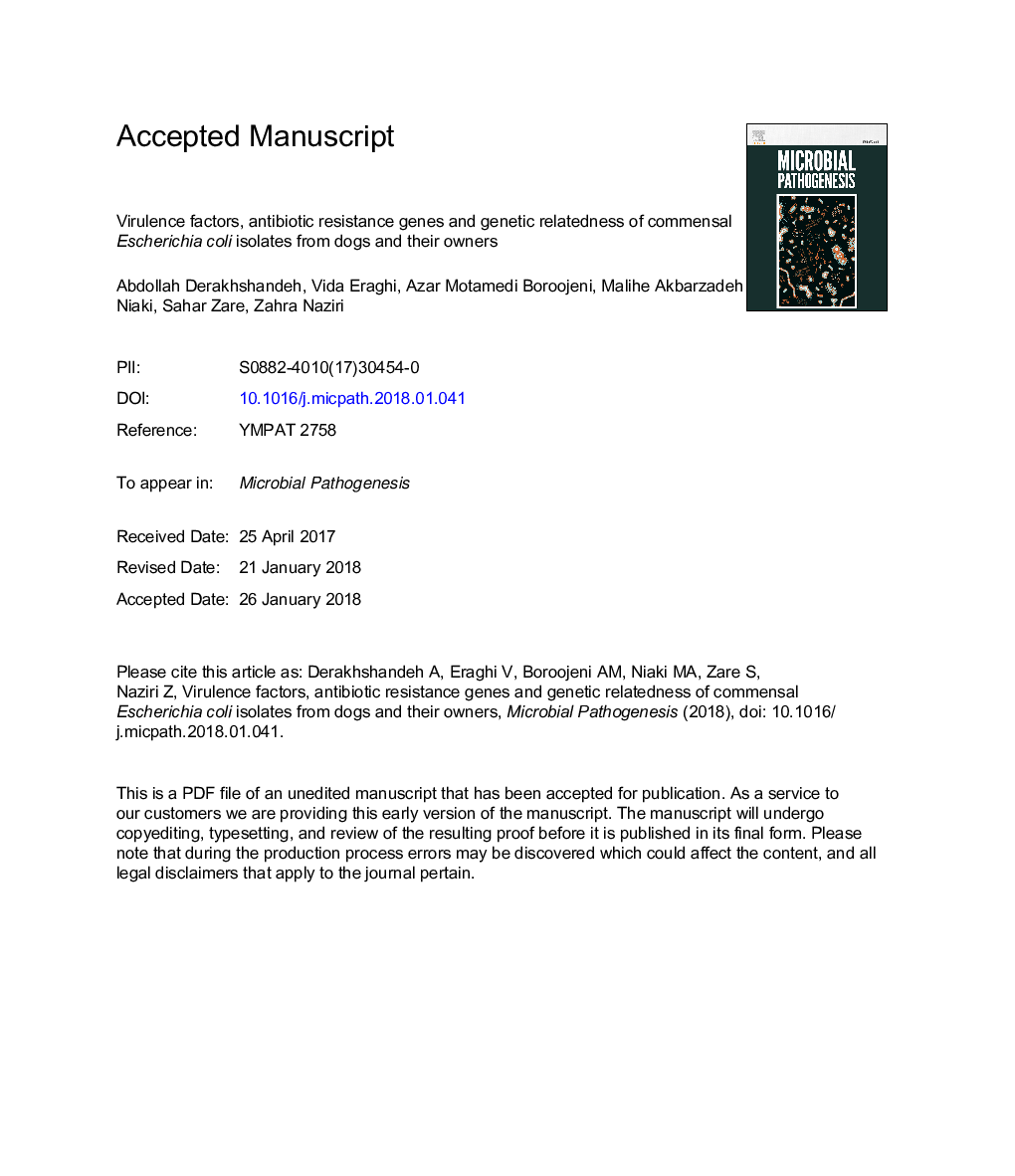| کد مقاله | کد نشریه | سال انتشار | مقاله انگلیسی | نسخه تمام متن |
|---|---|---|---|---|
| 8749739 | 1593673 | 2018 | 23 صفحه PDF | دانلود رایگان |
عنوان انگلیسی مقاله ISI
Virulence factors, antibiotic resistance genes and genetic relatedness of commensal Escherichia coli isolates from dogs and their owners
دانلود مقاله + سفارش ترجمه
دانلود مقاله ISI انگلیسی
رایگان برای ایرانیان
کلمات کلیدی
موضوعات مرتبط
علوم زیستی و بیوفناوری
ایمنی شناسی و میکروب شناسی
میکروب شناسی
پیش نمایش صفحه اول مقاله

چکیده انگلیسی
Escherichia coli (E. coli) is a normal flora of gastrointestinal tracts of humans and warm-blooded animals including dogs that has close vicinity with humans. Because the inter-species transmission of E. coli between pets and human beings, within a household, obtaining more information about the epidemiology, genetics, virulence factors, and antibiotic resistance of E. coli from dogs and their owners will help to control the inter-species transmission and treatment of E. coli infections. In this study we characterize and compare the antibiotic resistance and virulence profiles of fecal E. coli isolates from dogs and their owners. A total of 149 commensal E. coli isolates comprised 62 isolates from dogs, 56 isolates from their owners and 31 isolates from humans with no pet as control were collected. Extracted DNA was assessed for the presence of antibiotic resistance genes cmlA (chloramphenicol), sulI (sulfamethoxazole), floR (florfenicol) and blaCTX-M1 (cefotaxime) and virulence genes (papA, ompT, hlyD, traT, tsh and cnf1). To determine the extent of genetic relatedness of isolates, RAPD-PCR was performed. sulI and traT genes were the most dominant resistance profile and the most prevalent virulence gene in all groups, respectively, while hlyD had the lowest frequency among investigated virulence genes. Based on RAPD-PCR analysis clonal sharing between dogs and their owners were observed in 2/28 (7.1%) potential within-household clone-sharing pairs. Allowing dog to lick on owner's face, dog sex (female dogs), dog's sexual status (intact dogs) and times of disposing the feces (â¥twice a day) were associated with a higher percentage of RAPD profile similarity (Pâ¯<â¯0.05). The current study did not show an obvious evidence to prove considerable transmission of fecal E. coli from dogs to their owners. But in two households, there were relationship between isolates from dogs and their owners.
ناشر
Database: Elsevier - ScienceDirect (ساینس دایرکت)
Journal: Microbial Pathogenesis - Volume 116, March 2018, Pages 241-245
Journal: Microbial Pathogenesis - Volume 116, March 2018, Pages 241-245
نویسندگان
Abdollah Derakhshandeh, Vida Eraghi, Azar Motamedi Boroojeni, Malihe Akbarzadeh Niaki, Sahar Zare, Zahra Naziri,